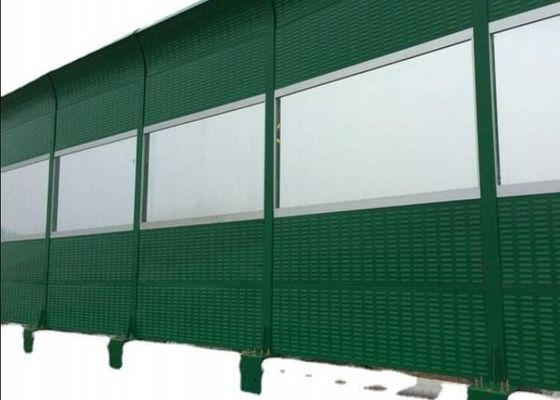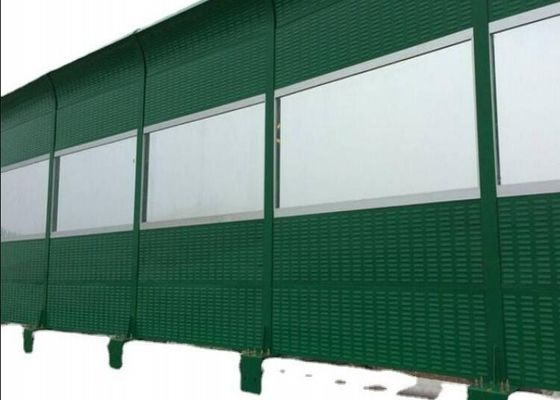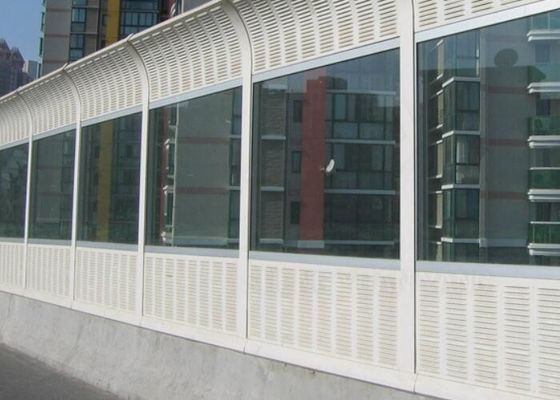Sound Absorbing Metal Punch Plate Highway Galvanized Steel Perforated Sheet

Sound-absorbing Punching Plate, also known as sound-proof walls, are one of the most effective solutions for mitigating noise from roads, railways, and industrial sources. Primarily used for road applications, these noise barriers are installed around construction sites to reduce noise and dust pollution for pedestrians and nearby residents.
(1) Steel Frame
The main support steel column of the sound barrier uses HW175 steel with a 20mm thick base plate. The entire structure undergoes rigorous treatment including pickling, degreasing, hot-dip galvanizing (≥76um thickness), and spraying (using pure polyester plastic powder with 80-100un thickness).

(2) Composite Sound-Absorbing and Sound-Insulating Panels
Features 12mm thick galvanized steel sheets (both front and back panels with louver holes) filled with 100mm thick, 48Kg/m³ centrifugal glass wool (≤±5% bulk density error, ≤3% impurity content, moisture-resistant). The aluminum louver orifice has ≥25% opening rate with pure polyester spray coating. Noise reduction coefficient NRC > 0.65. Window frames use ≥1.2mm thick aluminum alloy profiles with 5+0.76pvb+5mm striped tempered laminated glass (≥85% light transmittance).

(3) Transparent Sound Insulation Board
Constructed with laminated glass meeting national standards (no cracks allowed). Four sides feature 6-series aluminum alloy frame (≥1.5mm wall thickness, ≥60*80un cross-section) with EPDM rubber U-shaped sealing strips between glass and frame.

(4) The Post for Sound-Absorbing Punching Plate
H-shaped steel columns come in various styles: upright, top arc, top angled, large-sized, double angled, fully enclosed, and curved. Common specifications include 100*100mm, 125*125mm, 150*150mm, with flange plates typically 250*250*10mm to 400*400*10mm.

KDL Certificated

KDL Workshop

FAQ
Q: Why You Need an Anti-skid Plate?
- Open design for easy maintenance - quick filter channels for liquids, mud, snow and ice
- High Load Capacity - High strength to weight ratio for deep performance, outlasts many competing products
- Lightweight - easy to manufacture and install
Q: Can perforated sheet be plastic coated?
We don't plastic coat perforated sheet, however we can perforate a plastic sheet.
Q: Why is perforated sheet protected with a thin layer of oil?
Lubricating oil is used to reduce the friction during the perforating process.
Q: Can perforated sheet be formed after perforating?
We can shear and form perforated sheet to any specification needed.
Q: What opening types are most common in perforated sheet?
Round, rectangular, and slotted perforated sheet are very popular options. See our decorative perforated sheet for more unique styles.
Q: Which perforated sheet materials are rust resistant?
Perforated aluminum, stainless steel, and galvanized perforated steel are the most rust resistant materials that we perforate.
Q: Why is perforated sheet commonly used?
Perforated sheet is used for a variety of applications because of the hole size options, percentage of open area, high strength-to-weight ratio, and aesthetic appeal.
Q: Can I choose the material type for my perforated metal sheet?
Yes, there are many material options for your perforated sheet order. Perforated steel comes in both stainless perforated steel and carbon perforated steel. You can also choose aluminum perforated sheet.

 Your message must be between 20-3,000 characters!
Your message must be between 20-3,000 characters! Please check your E-mail!
Please check your E-mail!  Your message must be between 20-3,000 characters!
Your message must be between 20-3,000 characters! Please check your E-mail!
Please check your E-mail! 




